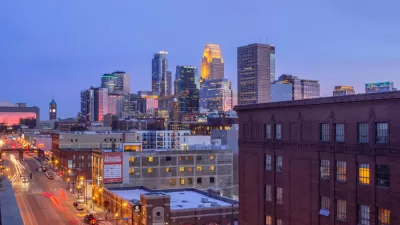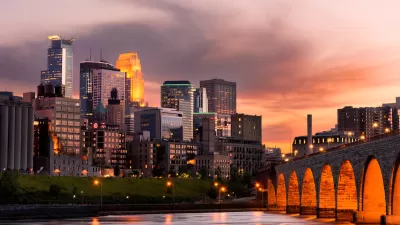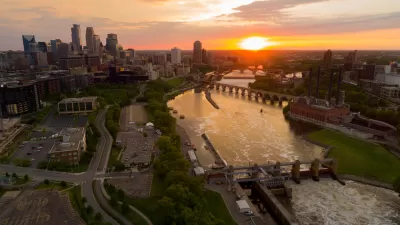Stringent zoning, high costs, and a culture of skepticism directed at developers have hampered efforts to introduce infill redevelopment into some of Minneapolis' most prime locations.
Marlys Harris, of the MinnPost, outlines the reasons why development in Minneapolis is occurring at less than a snail's pace. Developers are simply finding development in the city too expensive, requiring extensive variances and time. "'Stop' may be Minneapolis' secret mantra," says Harris, who asks developers, planners, and land use experts for their opinions on the causes for the quagmire.
Unmitigated resistance from residents and public officials against anything new seems to be one such reason. "The attitude toward anything new seems to be negative at the outset," reports Harris. "Unless the developer is trying to put an abattoir in a residential neighborhood, maybe we should take a breath before taking a stand...The question should not be: How do we stop this, but how can we make it work for all of us?"
Perhaps stemming from this culture of skepticism is the city's strict zoning codes. "We should make the zoning code more flexible and expressive of what the city really wants built in that area," says Harris. "And, if no one wants to put up the specified development, well then, maybe the zoning is infeasible and needs to be changed."
FULL STORY: Why (almost) nothing seems to be getting done in Minneapolis

Manufactured Crisis: Losing the Nation’s Largest Source of Unsubsidized Affordable Housing
Manufactured housing communities have long been an affordable housing option for millions of people living in the U.S., but that affordability is disappearing rapidly. How did we get here?

Americans May Be Stuck — But Why?
Americans are moving a lot less than they once did, and that is a problem. While Yoni Applebaum, in his highly-publicized article Stuck, gets the reasons badly wrong, it's still important to ask: why are we moving so much less than before?

Using Old Oil and Gas Wells for Green Energy Storage
Penn State researchers have found that repurposing abandoned oil and gas wells for geothermal-assisted compressed-air energy storage can boost efficiency, reduce environmental risks, and support clean energy and job transitions.

Greening Oakland’s School Grounds
With help from community partners like the Trust for Public Land, Oakland Unified School District is turning barren, asphalt-covered schoolyards into vibrant, green spaces that support outdoor learning, play, and student well-being.

California Governor Suspends CEQA Reviews for Utilities in Fire Areas
Utility restoration efforts in areas affected by the January wildfires in Los Angeles will be exempt from environmental regulations to speed up the rebuilding of essential infrastructure.

Native American Communities Prepare to Lead on Environmental Stewardship
In the face of federal threats to public lands and conservation efforts, indigenous groups continue to model nature-centered conservation efforts.
Urban Design for Planners 1: Software Tools
This six-course series explores essential urban design concepts using open source software and equips planners with the tools they need to participate fully in the urban design process.
Planning for Universal Design
Learn the tools for implementing Universal Design in planning regulations.
Heyer Gruel & Associates PA
City of Moreno Valley
Institute for Housing and Urban Development Studies (IHS)
City of Grandview
Harvard GSD Executive Education
Salt Lake City
NYU Wagner Graduate School of Public Service
City of Cambridge, Maryland





























